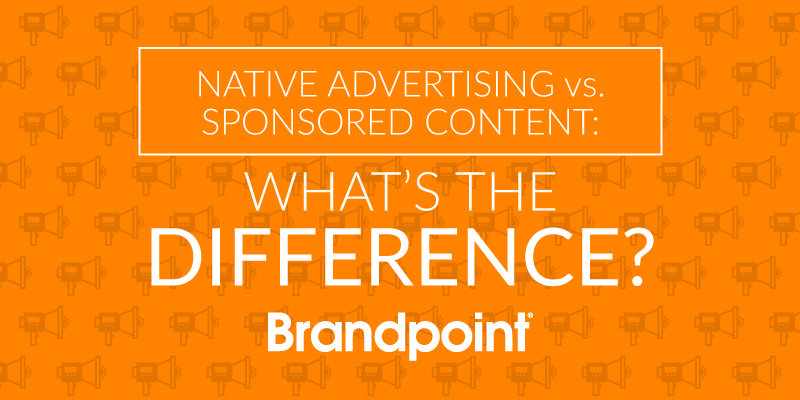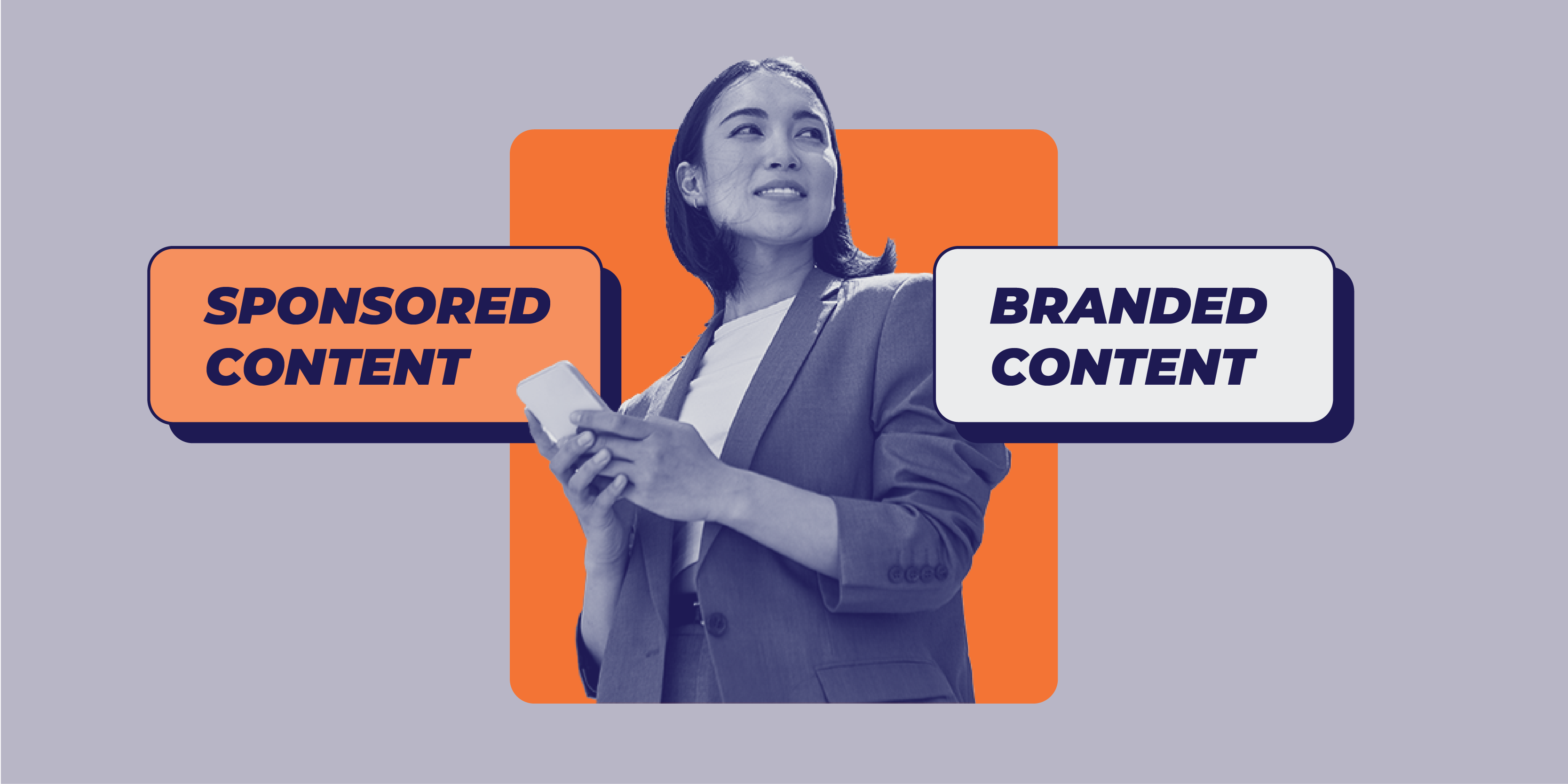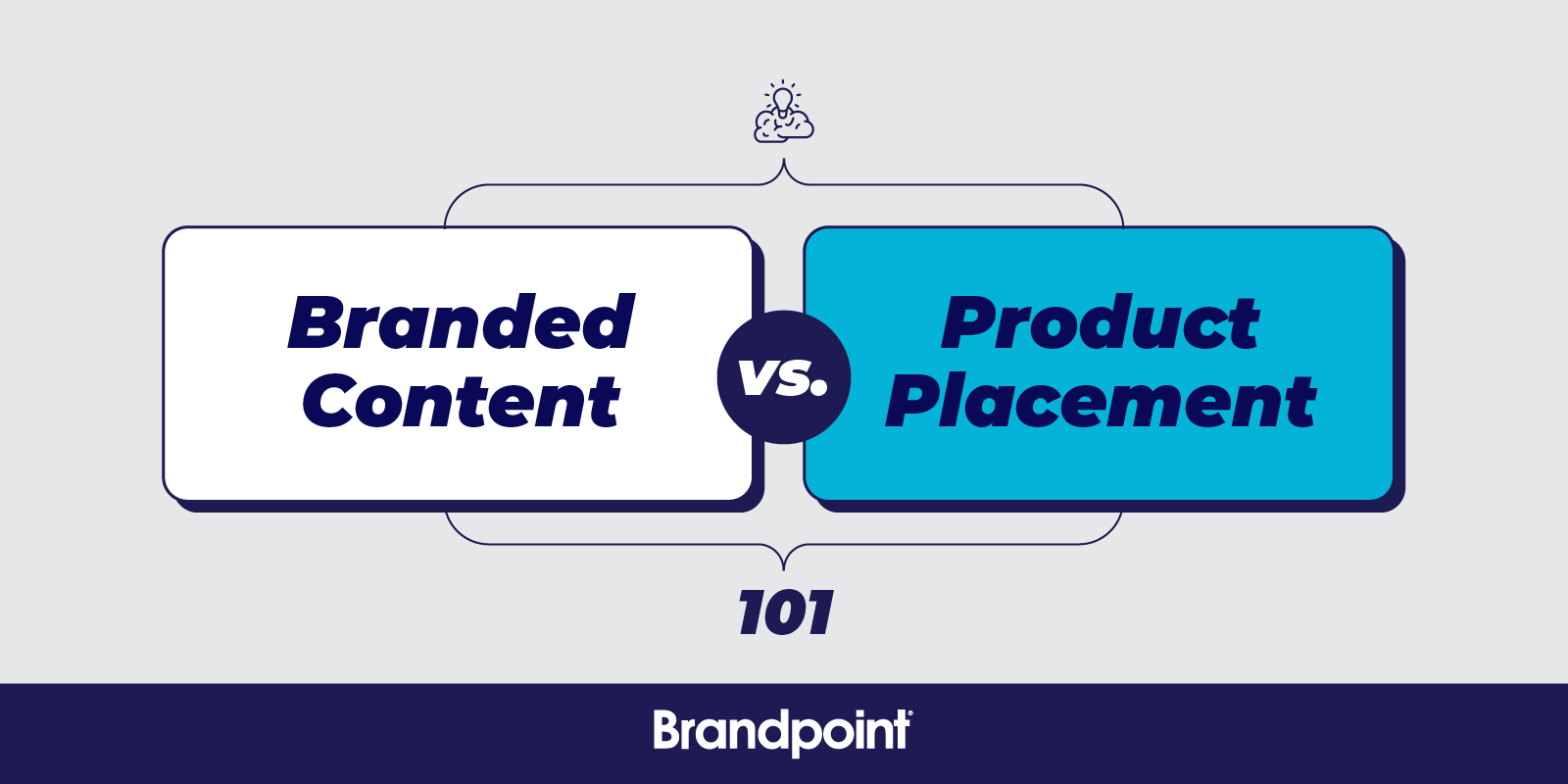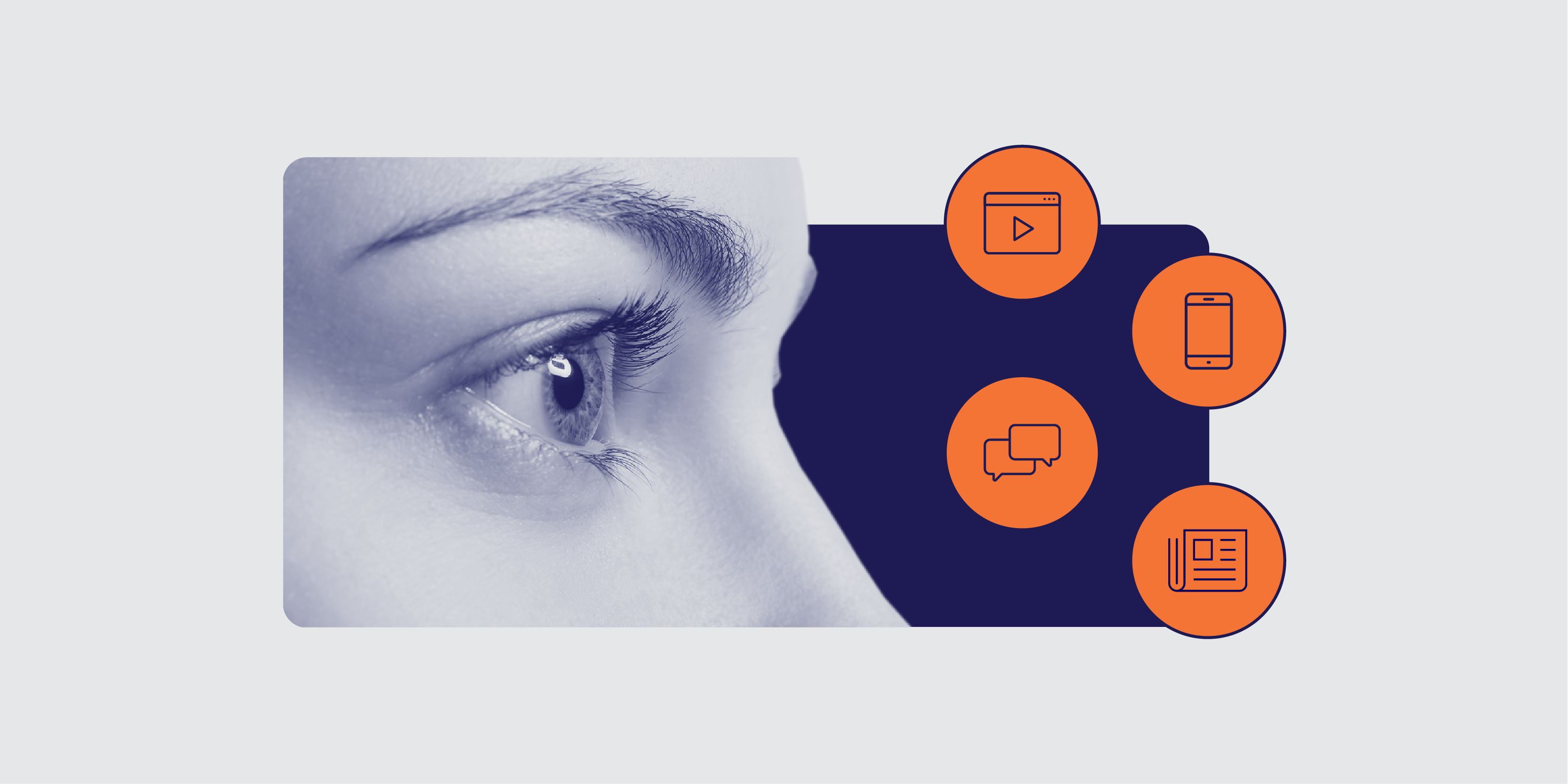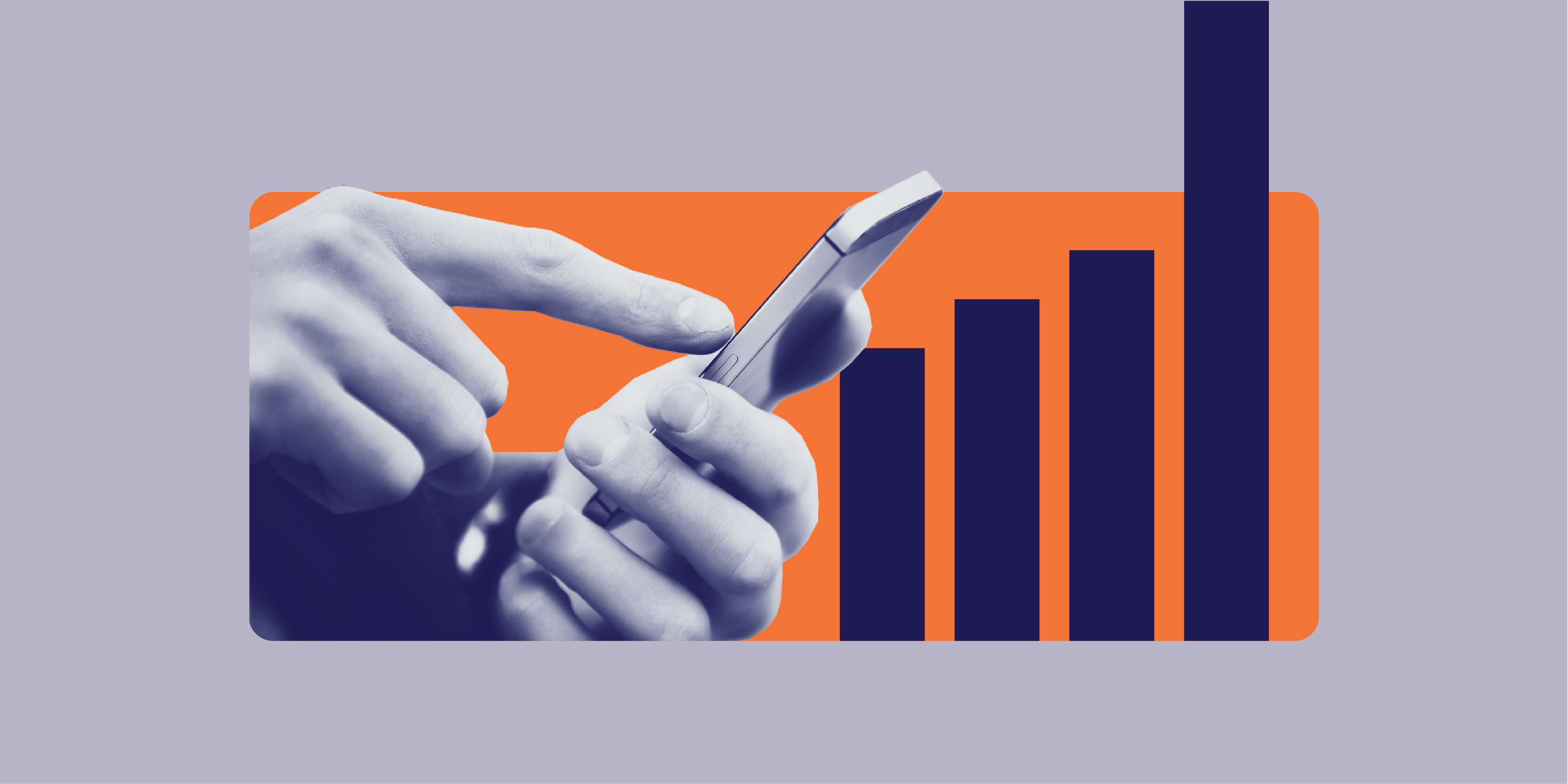Sponsored content and native advertising are forms of paid media strategies that fit the form and function of the surrounding editorial content on a webpage. It looks “native” to the page.
However, the main difference is that native advertising is more like a traditional ad and sponsored content is more like a media placement.
Native ads contain a headline and description to encourage users to click on the link. This leads to an article on a brand’s website or to other sponsored content.
Sponsored content, a type of branded content, is a piece of brand journalism that lives on a publisher’s website. The sponsored post usually written by the publisher’s staff so the article matches the tone and voice of rest of their content.
Each type serves a different purpose and will be most effective depending on what your brand hopes to achieve. In this post, we expand on these definitions, explain when to use native ads and sponsored content, and show what they look like.
Native advertising
What is native advertising?
A native ad lives on a webpage and links to either sponsored, owned or earned media — really, anything the brand wants people to read.
Once you click on the ad, it will likely send you to a lightly branded article. You’ll usually see a couple brand mentions as well as a CTA. The most effective types of native ads are those that provide real, actionable value for the reader.
What does native advertising look like?
The Interactive Advertising Bureau (IAB) offers a list of six types of native ad formats that satisfy the definition. These forms include:
- In-feed ads (presented on publishing websites as well as social platforms)
- Paid search ads (the ads at the top of your a search platform)
- Recommendation widgets (Outbrain, Taboola, StackAdapt, etc.)
- Promoted listings (on shopping websites such as Amazon or Etsy)
- In-ad with native element units (Appssavvy, Martini Media, EA, etc.)
- Custom/”can’t be contained” (Hearts, Flipboard, Tumblr, etc.)
In all of these cases, the ad looks like its surrounding content. If you’re shopping for shoes on Amazon, you may see an ad placement on the side or underneath the main content that looks like the other shoe listings. These posts are labeled as an advertisement. These Amazon ads make it easier for brands to get attention for their products in a spot where users intentionally go to make a purchase.
[Read more: Learn how to create native advertising content that performs!]
In-feed units and recommendation widgets will only include a snippet of copy to grab a reader’s attention which usually consists of a headline and description with a single photo. Ideally, your native ads should match the user’s experience on that page including the fonts, colors and functions.
What are native advertising’s benefits?
Native ads are used to build credibility and trust with consumers, satisfying brands’ long-term goals. According to Business Insider, native ads (typically sold on a pay-per-click-basis) will account for 74 percent of all ad revenue by 2021.
Sharethrough found that readers spend just as much time viewing native ads as they do editorial content. Native ads were also found to increases brand lift by as much as 82 percent. You can measure views, clicks and post-click engagement on a native ad, which allows you to analyze campaigns and conduct A/B testing to choose the best performer.
Unlike traditional display ads, native ads have the potential of a long shelf life. Because the content is hosted on a webpage (such as on your blog) you may continue seeing organic traffic from social media shares even once the native ad campaign is complete.
Native advertising ad placement examples:
Promoted listing: Etsy features artisan and handmade products sold by individuals. You can search a large variety of products. Here, we searched for wedding centerpieces:
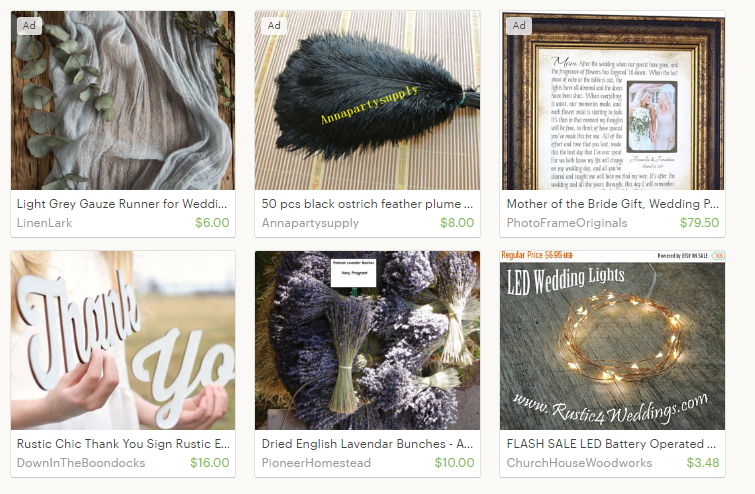
You’ll see that the first row includes products that display an “ad” icon in the upper left corner. This type of native advertising boosts views of a brand’s products by bringing them to the top of the page. Shoppers are more likely to see these listings than if they appeared later in the results.
Paid search units (most commonly, Google Adwords): When searching for a new product on a search platform, a paid search unit will appear at the top of the search platform, similar to the promoted listing.
Recommendation widgets: Using tools like Outbrain or Taboola, you can create an ad that links to a post you’d like to promote. The ad will appear at the bottom or on the side of of an article on a website that may look like the following:
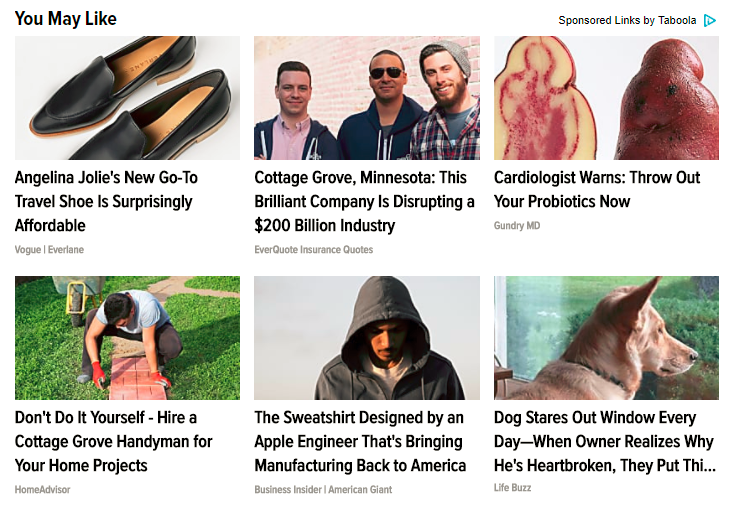
Sponsored content
What is sponsored content?
Sponsored content is considered a type of native advertising. It also fits the form and function of its host.
The difference is that sponsored editorial content are not ads. It’s a longer-form piece of brand-sponsored content such as an article or video that lives on a media publisher’s site.
Sponsored posts tell a full story and is written and produced to be as engaging as possible, encouraging an audience to spend a long time with the content. Like native ads, the most successful sponsored content provides useful value to readers, either by educating or entertaining.
As a marketer, you can direct the message and even create the copy and doesn’t require the involvement of another platform. Some publishers have teams dedicated to creating sponsored content for their brand partnerships.
Typically, sponsored content marketing is less restrictive than native advertising and publishers give brands leeway to be creative and engaging—as long as the post is cleared marked as “sponsored” or “promoted.” This also means that brands can mention a product or service and include a call to action.
What does sponsored content look like?
Sponsored content can be anything from an article to video to a listicle, as long as it looks like a native part of the publisher website.
You’ll see collaborations between brands and publishers on media sites like BuzzFeed, Forbes, the New York Times, Huffington Post, etc. These major publications have developed content studios dedicated to create and host sponsored content.
Partnering with a studio, however, is rather spendy. BuzzFeed charges around $100,000 for a piece of sponsored content. Brandpoint’s unique and expansive publisher network gives you access to a massive audience for a small fraction of the cost.
Most print publications also have sections dedicated to sponsored content. The articles will include similar elements used throughout the publication, such as using the same font and colors, but may include a gray background or another element to set it apart as sponsored.
What are sponsored content’s benefits?
By publishing a helpful article, a brand positions themselves as an expert, or a major storytelling voice, in their field. The goal is to establish trust with customers so they can rely on a company’s information and products.
Businesses are likely to see a sales jump once a sponsored post is published. This is considered a short-term benefit according to contentmarketing.com, but there’s also long-term brand awareness and nurturing at play. Consumers may discover that they enjoy your brand’s content. Though they may not regularly purchase your products, they may continue to follow your posts and engage with your brand.
Examples of sponsored content:
The Renewal Project: Partnership between Allstate and The Atlantic
Allstate insurance created a collection of stories on a separate website (therenewalproject.com) to “highlight, support, and celebrate ordinary people creating extraordinary community renewal.” The website is just one in a series of other “renewal” campaigns, created by Atlantic Media Strategies, the studio for The Atlantic.
Cocaine Economics: Partnership between Netflix and The Wall Street Journal
To promote new television show “Narcos,” Netflix partnered with the advertising department of The Wall Street Journal to create a standalone piece digging deep in the show’s central issue — violence among cocaine traffickers. The content is highly engaging due to illustrations, interactive animations, pull quotes and video clips of the show.
Can You Guess Which Animal Fact We Made Up?: Partnership between Wendy’s and BuzzFeed
Wendy’s is a brand publisher on BuzzFeed. But their content usually doesn’t have much to do with their food. Rather, they post entertaining content to attract readers. In this case, Wendy’s takes an interactive approach with a quiz to test readers’ animal knowledge. To make a connection to their brand, Wendy’s states at the bottom of the page: “Some of these facts seem impossible to believe. Just like Wendy’s adding the Double Stack™ as an option in the 4 for $4** for a limited time.”
Compare and Contrast
In today’s marketing landscape, paid media is a necessary strategy to reach your target audience and achieve inbound marketing goals.
Both sponsored content and native ads are tactics that help get your content seen and establish greater brand authority and longevity, but are very different in form and purpose.
Editor’s Note: This post was originally published in May, 2017 and has been updated for relevancy and comprehensiveness.

